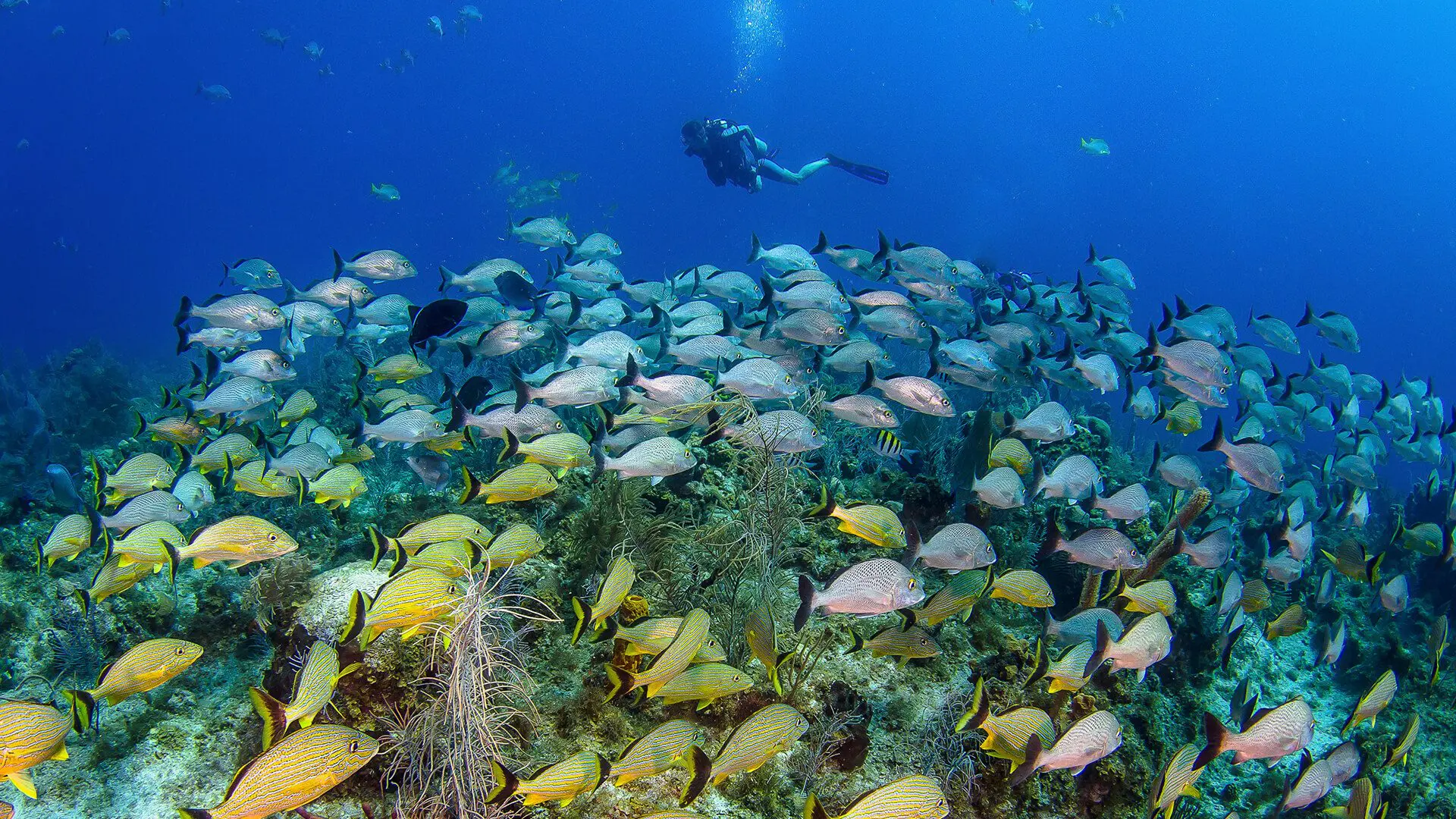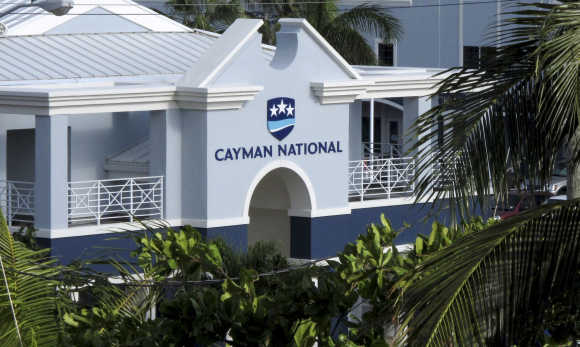Welcome to the amazing underwater world of the Cayman Islands! Located in the heart of the Caribbean Sea, the Cayman Islands comprise three captivating islands: Grand Cayman, Cayman Brac and Little Cayman. Renowned for their crystal clear waters, vibrant coral reefs and abundant marine life, the Cayman Islands have earned a well-deserved reputation as one of the world’s premier diving destinations.
Join us as we embark on an exploration of the diverse dive sites, iconic marine encounters and unique experiences that await beneath the surface of these enchanting islands. Discover the best time for scuba diving in the Cayman Islands and immerse yourself in a world of underwater wonder and adventure.
Best Time for Scuba Diving in the Cayman Islands
Topography of Diving in the Cayman Islands
About 400 kilometers northwest of Jamaica, in the heart of the Caribbean Sea, the small but mighty Cayman Islands stand out. These three islands are the peaks of the spectacular underwater mountains known as the Cayman Ridge.
Over the years, large coral reefs have grown on the slopes of this mountain. The islands that can be seen today are the rocky remains of those corals that emerged above the water. Below the surface, the islands are surrounded by vibrant coral reefs and mountains that contribute to the Cayman Islands’ reputation for offering some of the best diving in the world.
This, with its spectacular scenery, numerous underwater structures to explore and beautiful marine life, makes the Cayman Islands one of the most loved places in the world.
About 400 kilometers northwest of Jamaica, in the heart of the Caribbean Sea, the small but mighty Cayman Islands stand out. These three islands are the peaks of the spectacular underwater mountains known as the Cayman Ridge.
Over the years, large coral reefs have grown on the slopes of this mountain. The islands that can be seen today are the rocky remains of those corals that emerged above the water. Below the surface, the islands are surrounded by vibrant coral reefs and seamounts contribute to the Cayman Islands’ reputation for offering some of the best seawalls in the world.
This, along with the spectacular scenery, numerous underwater structures to explore and magnificent marine life, make the Cayman Islands one of the world’s most beloved diving destinations.
Cayman Islands – The Basics
If you’re arriving from overseas, you’ll most likely land on Grand Cayman Island, which hosts the main international airport, Owen Roberts International Airport (GCM). Grand Cayman is the most populous of the three islands, offering the widest selection of accommodations, restaurants, and tour operators.
Little Cayman is situated about 130 km northeast of Grand Cayman, and another 25 km onward is Cayman Brac. To travel from Grand Cayman to either of these islands, you can take a short flight or use the frequent and affordable ferry service.
What Marine Life Can I See in the Cayman Islands?
When you think of diving in the Cayman Islands, the first image that comes to mind is probably a stingray putting on a show for a surfer in clear water. While this sight is spectacular, diving in Cayman offers much more than just rays.
Every year you can encounter Hawksbill and Loggerhead turtles roaming the waters. If you’re not sure how to tell the difference, check out our sea turtle facts!
During the rainy months of April to August, you may have a chance to see the famous basking sharks, the largest of all sharks. In addition, you can easily see Caribbean reefs, groupers, eagle rays and many corals that decorate the reefs.
What Are the Cayman Islands Diving Conditions Like?
One of the highlights of diving in the Cayman Islands is the constant warmth of the water, which stays between 26-28°C (79-82ºF) year-round. In addition, visibility is spectacular, rarely dropping below 20 meters and often more.
Although underwater conditions are good year-round, the weather on land is more variable. The hurricane season runs from June to November, interspersed with rain from May to October, although the rains are usually short.
For diving, any time of the year is good, except for the peak hurricane season.
If you’re planning on exploring on the ground, you have to choose between visiting in the busy, hot months like April and November, or opting for the cooler, usually cheaper months in the gap.
Where Should I Dive in the Cayman Islands?
The Cayman Islands proudly feature impressive dive sites – one for each day of the year. However, most of us will only experience a few. We’ve selected the top Cayman scuba diving sites for you to explore!
Grand Cayman Scuba Diving Sites
Grand Cayman offers exceptional diving experiences with many flat coral reefs extending into the ocean. The island is famous for its amazing diving, especially in the northern part. The diving conditions here are excellent, similar to all of the Cayman Islands. Explorers can enjoy spectacular views of the falls, where sheer walls drop to depths of up to 6,000 feet (1,830 meters).
Stingray City
While there is more to diving in the Cayman Islands than just encountering stingrays, a visit to Stingray City is definitely worth it. In fact, for many explorers, a tour of this popular destination is the highlight of their trip to the Cayman Islands.
Why are there so many rays here? Historically, fishermen would dump their catch here after arriving by boat. Today, the sound of boat engines is reminiscent of the rays of those days, prompting them to flock in hopes of a free meal.
The site consists of sand that is about 5 meters (15 feet) below the surface of the water. Its shallow waters and excellent visibility make it an ideal destination for underwater photographers and beginners.
However, note that there are no corals in this area. It is often known for its amazing stingray encounters, although you never know what other creatures might turn up.
Devil’s Grotto And Eden Rock
Just a stone’s throw from the beautiful Seven Mile Beach, known as one of the most spectacular beaches in the Caribbean, are two Cayman Islands resorts that are the most sought after diving destinations. In these crystal clear waters, schools of giant tarpon sit next to silvertips and barracuda, echoing the bright silver reflections below. However, it’s not just the marine life that makes investors here rich; this unique feature makes him truly terrifying.
These two dive sites boast several large caves and complex tunnel networks, offering unparalleled diving opportunities. Don’t forget your underwater camera to capture the spectacular view. The tunnels, characterized by their short length, wide width and direct navigation, offer fun activities for different people of all skill levels. With small crews and excellent visibility, these sites welcome both the adventurous and the experienced, ensuring an unforgettable journey under the sea.
Cayman Brac Dive Sites
If you’re looking for relief from the bustling crowds and want an authentic vacation getaway, Cayman Brac beckons. Situated as the easterly of the three islands, tourism here has taken a more leisurely pace compared to its counterparts, ensuring a genuine retreat.
What’s more, it boasts captivating shipwrecks to explore. In addition, the scattered shore dives offer unique experiences, a relatively rare feature on Little Cayman.
Captain Keith Tibbetts
If you enjoy scuba diving, you may be familiar with the famous Captain Keith Tibbetts. This Soviet ship is the only one of its kind available to travelers in the Western Hemisphere. Exploring the 330-foot-long frigate offers plenty of ways to get inside, but even the contours of its edges promise a fun dive trip.
This dive site is perfect for experienced divers as its depth is around 24 meters or 80 feet down. Access to the interior is restricted to certified wreck divers only.
Elkhorn Forest
The Elkhorn Forest dive spot is conveniently located on the south coast of Cayman Brac, just a stone’s throw from the beach. Named for its spectacular Elkhorn coral reefs, it also hosts a thriving community of reef fish.
Its proximity to land is perfect for motorists who prefer short boats (sickness can affect motorists too!). Also, it is a favorite place for night outing.
Little Cayman Dive Sites
Little Cayman secretly boasts famous reefs along its northern shores in Bloody Bay Marine Park. Conservation initiatives have created more marine life in this park, enhancing the diving experience. With spectacular reefs and colorful corals, exploring these waters leaves an indelible mark.
However, exploring the southern part of the island should not be forgotten. They offer their own beauty and are excellent choices when conditions are not good in the north.
Bloody Bay Wall
There are at least 15 distinct sites within the scope of Bloody Bay Wall, but the Bloody Bay Wall catches the eye. Renowned as the first Cayman diving crown among the three islands, it effortlessly steals the spotlight.
As divers go deeper, they encounter a multitude of fish and crustaceans dancing on the reef. Below, you’ll see stingrays, Nassau puffins and eagles. The wall itself is decorated with corals, sea fans and sponges, creating an underwater tapestry. With unparalleled visibility and towering rock faces, diving here promises an otherworldly experience.
Jackson’s Bight
If you like to explore under the sea, consider visiting the area of Jackson’s Bight on the northwest side of Little Cayman. While the drops here may not be as steep as those near the Bloody Bay Wall, they offer plenty of tunnels and gaps just waiting to be discovered.
Also, this region is known for frequent sightings of eagle rays – and let’s be honest, who can resist the beauty of an eagle ray?
Cayman Liveaboards
Certainly! If you’re having a hard time choosing an island to stay on, staying on a boat can be a no-brainer. The Cayman Islands offer a wide range of accommodation options, providing a great opportunity to explore the dive sites on all three islands.
The options vary widely in terms of price and style of accommodation (although it has nothing to do with budget). Therefore, it is important to do a thorough research before making any booking. Our Girls by Scuba Facebook group is a great resource for finding advice.
Conclusion
The Cayman Islands offer special attractions year-round, offering spectacular views, vibrant wildlife and beautiful underwater landscapes. From the historic town of Stingray to the beautiful walls of Bloody Bay, visitors are welcome to the many dive sites in Grand Cayman, Cayman Brac and Little Cayman.
Whether it’s water exploration, intricate caves or ruins, the Cayman Islands cater to a variety of people of all skill levels. For those seeking a unique accommodation experience, liveaboards provide an excellent opportunity to explore the treasures of all three islands. With careful research and advice from communities like Girls that Scuba, divers can get the most out of their underwater adventures in the Cayman Islands.




